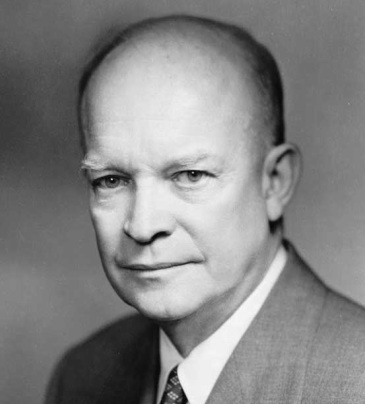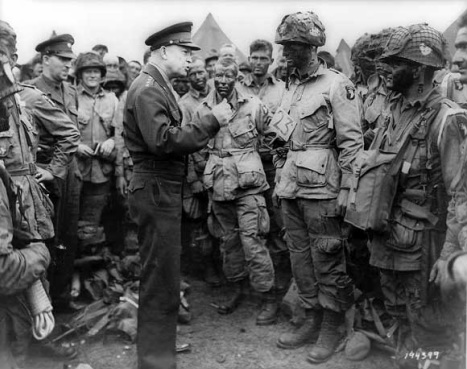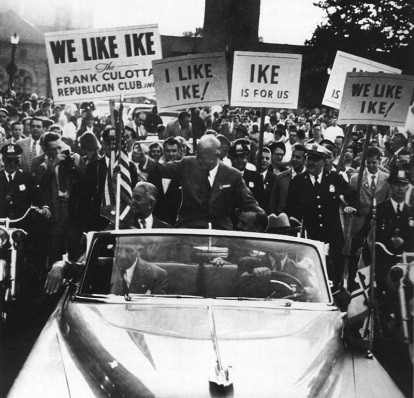President Dwight D. Eisenhower
Dwight D. Eisenhower was born in Texas in 1890 and raised in
Kansas. Before his presidency, Eisenhower served as a successful general in
Europe during World War II. After the war, he became president of Columbia
University, but left this position to take command of forces stationed in Paris
in 1951.
Eisenhower ran for president in 1952 and won easily. While
the majority of his focus was on the Cold War with Russia, he also played a
large role in the process of school desegregation. As desegregation of schools
began, he sent troops into Little Rock, Arkansas to assure compliance with the
orders of a Federal court. Eisenhower also ordered the complete desegregation
of the army, saying “there must be no second class citizens in this country.”
The Eisenhower administration declared all racial
discrimination a national security issue because Communists around the world
were using racial discrimination in the US as a point of propaganda attack.
Following World War II, the United States and the Soviet Union emerged as the
two remaining world powers, and each had a different belief about how a country
should run. The Soviets believed in Communism, which is a social structure that
tries to get rid of social structures and private property, which would make
the society more equal. Therefore, racism was a threat to the United States
because it made them look bad to potential allies because it showed that it did
not value equality like communist countries did.
The day after the US Supreme court made its decision on Brown v. Board of Education, where segregated schools ere ruled unconstitutional, Eisenhower told officials in Washington DC to make the city a model for the rest of the country by integrating black and white public school children. He proposed the Civil Rights Acts of 1957 and 1960 and signed those acts into law. The 1957 Act established a permanent civil rights office inside the Justice Department and the 1960 Act established federal inspection at local voter registration polls and introduced penalties for anyone who tried to stop someone from registering to vote or actually voting.
On 24th September, President Eisenhower went on television and told the American people that the Little Rock Crisis was a matter of national security and that integration must be permitted. After trying for eighteen days to persuade Faubus to obey the ruling of the Supreme Court, Eisenhower decided to send federal troops to Arkansas to ensure that black children could go to Little Rock Central High School, successfully integrating the high school.
The day after the US Supreme court made its decision on Brown v. Board of Education, where segregated schools ere ruled unconstitutional, Eisenhower told officials in Washington DC to make the city a model for the rest of the country by integrating black and white public school children. He proposed the Civil Rights Acts of 1957 and 1960 and signed those acts into law. The 1957 Act established a permanent civil rights office inside the Justice Department and the 1960 Act established federal inspection at local voter registration polls and introduced penalties for anyone who tried to stop someone from registering to vote or actually voting.
On 24th September, President Eisenhower went on television and told the American people that the Little Rock Crisis was a matter of national security and that integration must be permitted. After trying for eighteen days to persuade Faubus to obey the ruling of the Supreme Court, Eisenhower decided to send federal troops to Arkansas to ensure that black children could go to Little Rock Central High School, successfully integrating the high school.



